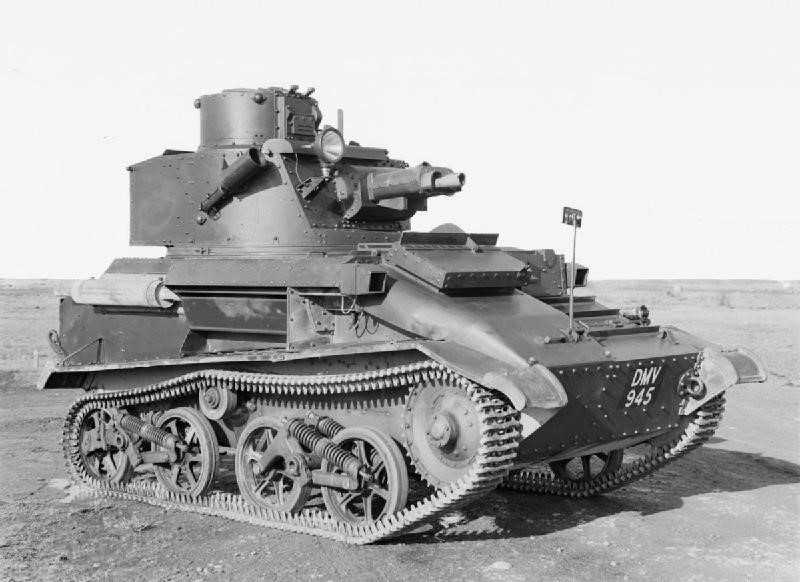
| Year | 1935 |
| Vehicle Type | Light Tank |
| Origin & Designer | Britain/Vickers |
| Numbers Produced | 850 |
| Crew | 3 (Commander, Gunner & Driver) |
| Main Armament | 1 x .50in Vickers Heavy Machine Gun |
| Main Armament | [@sponson_traverse] |
| Elevation | -10° to +37° |
| Turret Traverse | 360° (Manual) |
| Gun Traverse | [@gun_traverse] |
| Gun Mount | [@gun_mounts] |
| Maximum Range | [@maximum_range] |
| Armour Penetration | [@armour_penetration] |
| Gun Sight | [@gun_sight] |
| Secondary Armament | 1 x .303in Vickers Machine Gun (Coaxial) |
| Smoke Discharger | 2 x 4in Smoke Mortars |
| Ammunition Carried | 400 x .50 & 2.500 x .303 |
| Height | 2.26m |
| Width | 2.08m |
| Length | 4.01m |
| Combat Weight | 5.080 kg |
| Ground Clearance | 0.27m |
| Fording Depth | 0.61m |
| Trench Crossing | 1.52m |
| Obstacle Clearance | 0.60m |
| Climbing Ability | 60° |
| Radio | No. 7 Set |
| Armour | Hull Front: 14mm. Hull Sides: 11mm. Hull Rear: 6mm. Hull Top: 3mm. Hull Bottom: 14mm. Turret Front: 14mm. Turret Sides: 11mm. Turret Rear: 6mm. Turret Top: 4mm. |
| Engine | Meadows ESTB Type B (Petrol) |
| Transmission | 5 Forward & 1 Reverse |
| Maximum Road Range | 240 km |
| Maximum Cross Country Range | 140 km |
| Maximum Water Range | [@maximum_water_range] |
| Maximum Road Speed | 56 kph |
| Maximum Cross Country Speed | 40 kph |
| Maximum Water Speed | [@maximum_water_speed] |
| Variants | Indian pattern turret with cupola removed |
| Notes | The British firm Vickers-Armstrong built a number of light tanks during the inter-war years. In 1936 they designed a light tank that mounted a turret with the capacity to hold three crew members. The chassis was a little short for its width and its armour was only 14mm thick. The 88 hp engine gave it good speed and it handled well enough and mainly because of the Horstmann suspension which was reliable enough. The vehicle was called Mk. IV light tank and it made up the majority of the British army tank strength in 1939. It served in France, Greece, Crete, the Western Desert and Syria. A few were also sent to the Far-East. |